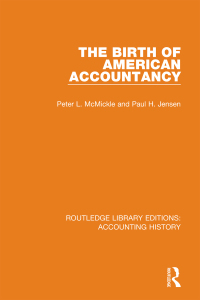Answered step by step
Verified Expert Solution
Question
1 Approved Answer
help me please Exercise: Auditing 1. Theories of Auditing The Policeman Theory Auditing was focused on arithmetical accuracy and on prevention and detection of fraud.


help me please
Exercise: Auditing 1. Theories of Auditing The Policeman Theory Auditing was focused on arithmetical accuracy and on prevention and detection of fraud. Popular 1940s US. Weakness is its inability to explain the shift of auditing to verification of truth and faimess of the financial statements The Lending Credibility Theory: Primary function of auditing the addition of credibility to the financial statements. The theory as such is unable to explain the various other functions the users of financial statements expect the auditor to assume as part of attestation function. The Theory of Inspired Confidence: Developed in the late 1920s by the Dutch professor Theodore Limperg. The demand for audit services is the direct consequence of the participation of outside stakeholders (third parties) in the company. The auditor should act in such a way that he does not disappoint the expectations of a 'rational outsider', while, on the other hand, he should not arouse greater expectations in his report than his examination justifies. Agency Theory auditor monitor shareholder (owner) - principal management agent Agency theory can be used to explain the supply side of the audit market. The contribution of an audit to third parties is basically determined by (1) the probability that the auditor will detect errors in the financial statements (or other irregularities, such as fraud or illegal acts) and (2) her willingness to report these errors (e.g. by qualifying her auditor's report), even against the wish of the auditee (auditor independence). Shareholder Board of Directors Management Company operations Costs of an agency relationship are monitoring costs (the cost of monitoring the agents), bonding costs (the costs, incurred by an agent, of insuring that agents will not take adverse actions against the principals) and residual loss (effective loss that results despite the bonding and monitoring costs incurred) Read the passage 1 and answer the following two questions. Question 1: Explain the difference in the above theories in your own words. Question 2: In your opinion, which theory best describes auditing and why? 2. Conflict of interests By definition, a conflict of interest is a situation where an individual or an organization, an agent, has multiple interests and of those interests one could possibly corrupt the motivation for an act in the other. Generally, a conflict of interest presupposes a circumstance where the agent is entrusted with some impartiality (objectivity or independence). The presence of a conflict of interest is independent from the execution of impropriety. Therefore, a conflict of interest can be discovered and voluntarily defused before any corruption occurs. As an illustrative example of conflict of interest, think of a self-dealing conflict of interest situation when a government official responsible for computer equipment purchases, decides to enter into a transaction with a company that the official owns himself. As a result the decision maker is on the both sides of the transaction: buyer and supplier. In accounting and auditing contexts conflict of interest usually refers to the conflicts between shareholders and managers' objectives in agency relationships (see Figure 2 below) As noted, if in an agency relationship ownership is separated from control and both agent and principal strive to maximize their own utility, this will result in conflict of interests (Jensen et al. 1976). Studies on managerial compensation have generally found that company size increases manager remuneration (Jensen and Murphy 1990: Conyon and Murphy 2000). This provides management with an incentive to focus on company size growth, rather than growth in shareholder returns Managers also tend to pursue growth by diversifying, which reduces management's industry specific risk and strengthens their job security. However, Lang and Stulz (1994) find that shareholder returns are greater in undiversified companies and they also show that the value of the companies is reduced as they diversify further. Read the passage 2 carefully and answer the following questions. Question 1: Define conflict of interest. Give four examples of conflict of interest situations. Question 2. How a conflict of interest arises between managers and shareholders of a company Step by Step Solution
There are 3 Steps involved in it
Step: 1

Get Instant Access to Expert-Tailored Solutions
See step-by-step solutions with expert insights and AI powered tools for academic success
Step: 2

Step: 3

Ace Your Homework with AI
Get the answers you need in no time with our AI-driven, step-by-step assistance
Get Started


